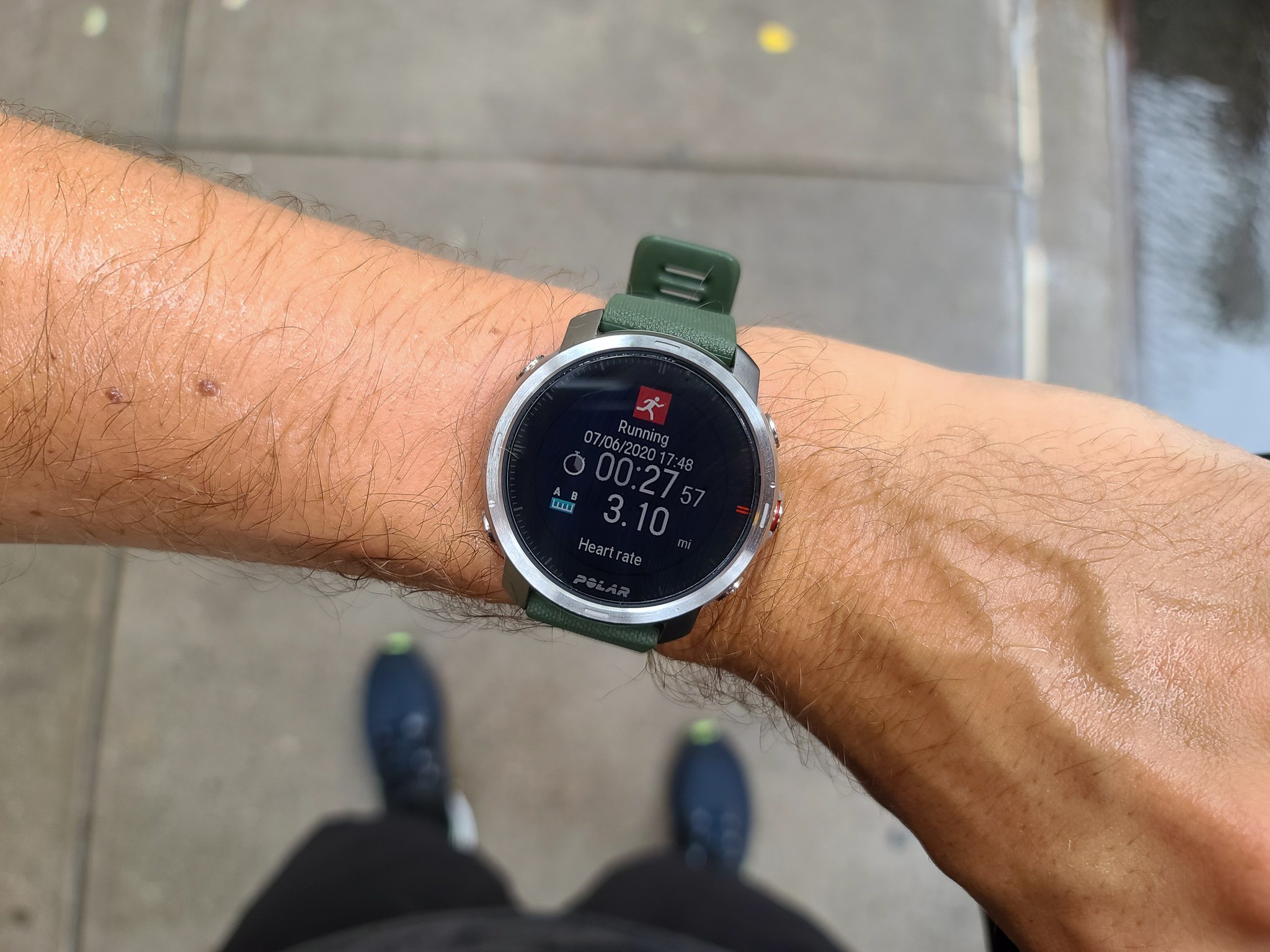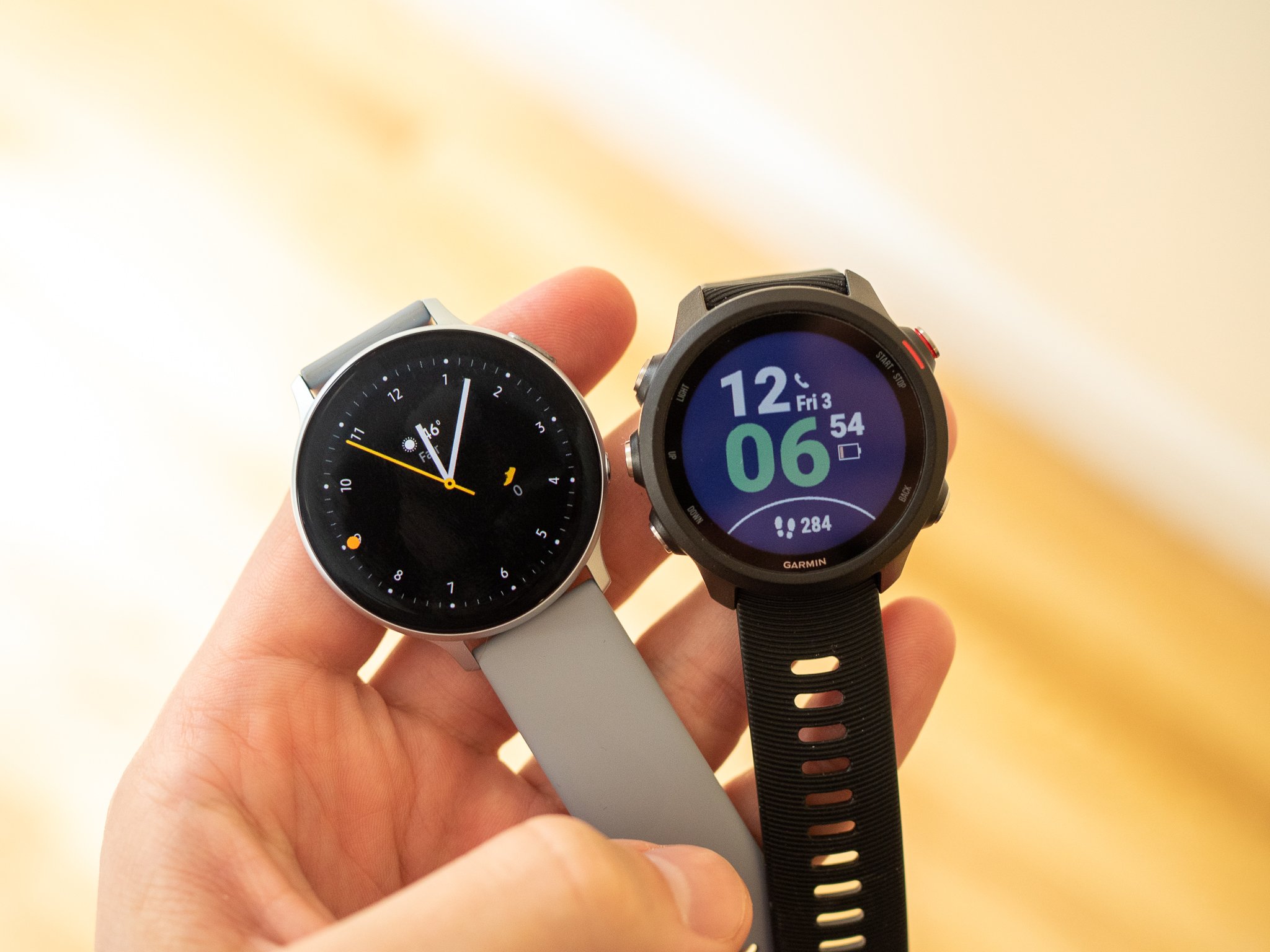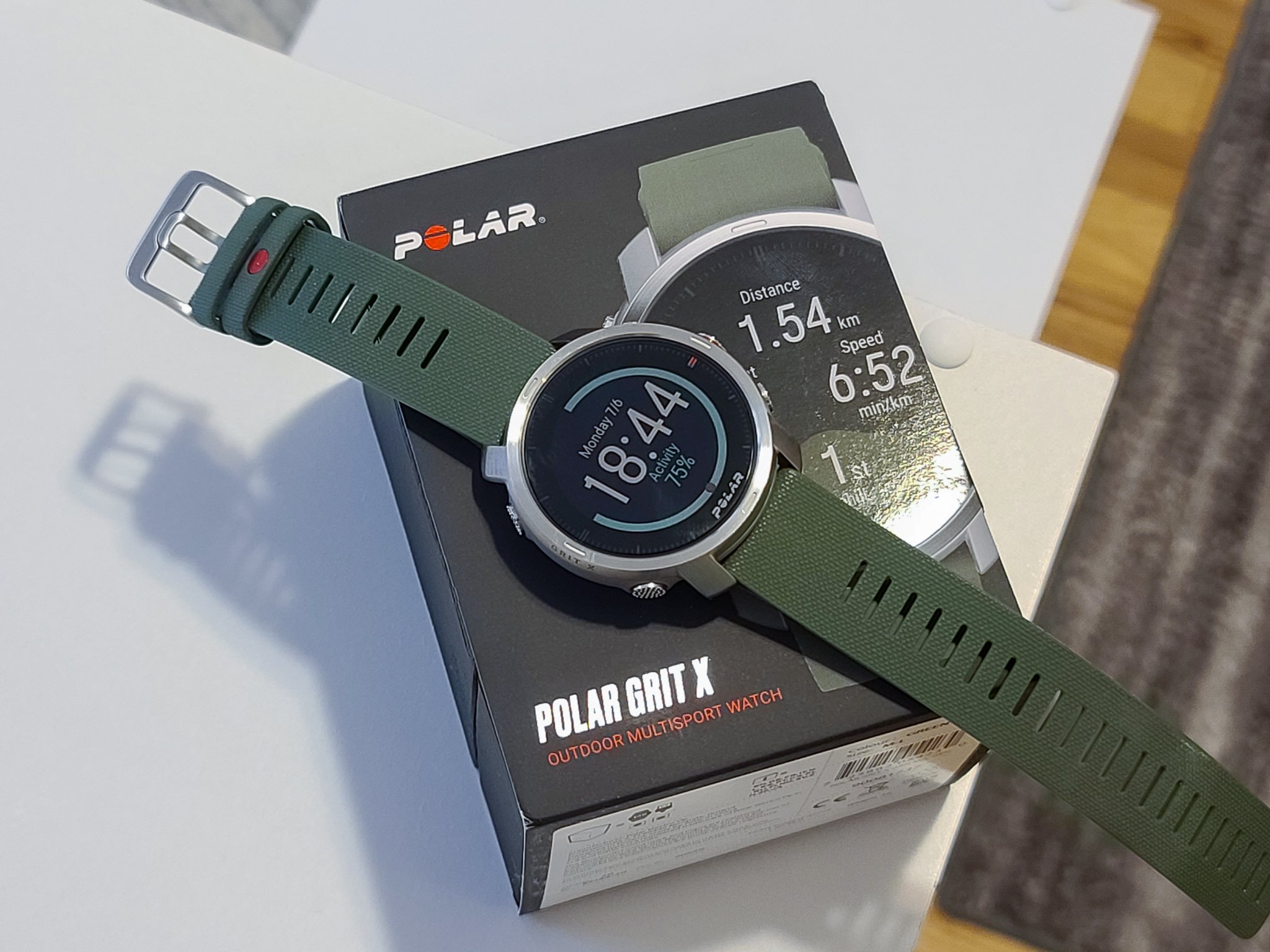Polar Grit X review: A sport smartwatch that's more hardcore than I am
Some people need a watch that can track everything, and go anywhere.
Fitness-focused smartwatches span a wide range of capabilities, sizes, styles, and price points. And while the biggest portion of smartwatch sales comes with general-purpose tracking capabilities, you'd be surprised by how big the market is for higher-dollar specialized watches designed for very active people who need to track all sorts of intense activities.
Polar is one of the big names in serious fitness tracking, and its Grit X smartwatch is one of these models focused on giving multi-sport athletes the hardware necessary to track any workout imaginable. The price is higher than you'd expect if you're used to the Galaxy Watch Active or Fitbit Charge 4, but the capabilities go far beyond an average fitness tracker, too. Here's a look at a watch you'll consider when you want to take your fitness tracking to the next level.
At a glance
Polar Grit X
Bottom line: The Polar Grit X delivers on its core promise, being a truly rugged and capable multi-sport watch that can track any activity you could imagine. It's a bit clunky, but tough as you'd need and packs good battery life. Accurate GPS, heart rate, and altitude are just the beginning of what this watch can track, and the data is all waiting for you in the companion app. That being said, the Grit X is vastly overkill for most people who just want to track typical activities, including anyone who sticks to gym workouts, runs, and cycling.
Pros
- Great screen visibility
- Accurate GPS, heart rate, and altitude
- Incredible amount of data collection
- High-quality case and band
- Looks nicer than most "sport" watches
Cons
- Rather thick and bulky
- Terrible touch screen response
- App is focused on hardcore users
- Basic software with little customizability
- Overkill for all but intense fitness users
Jump to:
Polar Grit X What's great
Some people like their smartwatches to be subtle, particularly if they're just for fitness tracking. The Polar Grit X is not for those people; it's big, bold, and imposing. Though it's available in a black/black color combo that's a bit more stealthy than my silver/green model, in either case, it's clear you have a serious bit of kit on your wrist when you wear the Grit X.
The Grit X is big, imposing, and tells you exactly what it's meant to do.
With my large wrists, I didn't mind the Grit X's relatively large 47x47x13 mm case; and although at 64 grams it's not particularly heavy, others may prefer something that's just smaller overall. Since size wasn't an issue, I appreciated its quality materials and design — from the steel top case and lugs to the comfortable strap and easy-to-press buttons. It's a quite rugged and outdoorsy design, but that fits with the positioning as the outdoors multi-sport model in Polar's lineup. The Grit X isn't just for casual jogs around the neighborhood — it's for hiking, trail runs, mountain biking, skiing, triathlons, and all sorts of extreme activities.
And the hardware specs back it up: it's MIL-STD 810G rated, waterproof up to 100 meters, can operate from -20 to 50 degrees C (-4 to 122 degrees F), and has a laminated Gorilla Glass screen covering.
During my review period, I had a perfect week to test many of its capabilities. Over the course of several days, I had an 8-mile run in the city, a bike ride, a high-speed track run workout, a woodsy trail run, a mountain hike to over a mile in elevation, and a 12-mile rural run — capped off with some casual kayaking and wakeboarding on the lake. The Grit X performed excellently for all of it — on top of being a great daily activity tracker and performing perfectly for my usual running three times a week over the course of a month using it.
You'll be able to track anything and everything you want to do, with incredible granularity.
The Grit X is defined by the incredible amount of data it can accurately collect, and the insane variety of activities it can track. You can keep 20 activity profiles pre-loaded on the watch, but there are over 100 to choose from — everything from aerobics to yoga, cricket to pilates, kitesurfing to snowboarding, jazz dance to volleyball. Activities get incredibly granular, too; for example, there isn't just a "running" profile, but running, trail running, road running, jogging, and ultra running. You'll be able to track anything and everything you want to do, guaranteed.
It's useful to have so many activity profiles because you can set up the watch to display different information in each one. There are multiple configurable screens you can view during an activity, and I was able to get just the right data for each — for example, a running view with two different pace readouts and distance information, but a completely different view for hiking with distance, altitude grade, and heart rate. Everything's perfectly visible in any lighting with the low-reflective color screen, which comes in at an average 1.2-inches across and 240x240 resolution. It's easy to get the information you need at a glance, even in direct sunlight, and you can quickly cycle through screens and pause/resume activities with the side buttons.
GPS, heart rate, and altitude tracking are very accurate, and the display is always easy to see.
Through every activity I tracked, I found the GPS, continuous heart rate, and altitude tracking to be spot on. GPS was impressively accurate even here in NYC where the buildings usually cause problems, and out on my mountain hike, the altimeter tracked accurately while the compass proved useful.
Battery life is listed at 40 hours of continuous workout-tracking, but I found that to depend strongly on what you're tracking. For a casual 8 mile run followed by a 6-mile bike ride, totaling about 3 hours of active tracking, the watch used roughly 8% of its battery, which is in line with Polar's estimate. But on my hike, constantly tracking distance and lots of elevation changes, with regular scrolling through the data screens for information, I used 20% battery in just 4 hours — and the last hour was spent in battery saver mode. That's about half the longevity Polar quotes, but it is understandable considering all it was doing.
The watch is good for 30 hours of workout-tracking, and 6 days of typical daily wear.
In my typical week where I run 15-20 miles, and maybe take a bike ride, I never noticed fitness tracking taking up a large percentage of battery life compared to my daily use of basic activity tracking, sleep tracking, and phone notifications. And even with this cadence of fitness tracking and always-on use, the Grit X was good for the advertised six or seven days of overall battery life — and like most watches, it recharges incredibly quickly off a standard USB-A plug.
A huge part of the Polar smartwatch experience is using the Polar Flow app, which takes in every bit of data possible from your activities to give you insights into all aspects of what you do. It isn't the most friendly app to pick up and start using, and goes way over my head in most areas, but the information it provides is right in line with the target audience for this watch.
The main interface showing the progression of your activities throughout the day, week, and month is easy enough to understand, as is the first page of the workout display, but everything beyond that gets really deep into the weeds really fast. I found the information density to be overwhelming, and some of the settings and controls to be less than intuitive. Garmin's app has a much more approachable interface while retaining all of the advanced data elsewhere in the app, but I have no doubt that after weeks and months using Polar Flow, you'll find your way through it and figure out how everything works all the same.
You can also access your Polar Flow data on the web, follow and be followed by friends, or sync your activity data with popular services like Strava, Nike Run Club, MyFitnessPal, TrainingPeaks, and Komoot. Again, it's a lot to take in, but I'd prefer to have the options available. And data portability is incredibly important if you ever plan to use a smartwatch from a different company.
Polar Grit X What's not good
Where the Grit X struggles is in the smartwatch part of the equation. I'm certainly spoiled by being used to the latest and greatest smartphones and smartwatches, with fast processors driving smooth interfaces and slick animations, but even by modest standards, the Grit X has awful interface performance. For as good as the screen is for viewing data during workouts, it's really bad in every other interaction.
The Grit X is truly just for fitness tracking — the "smartwatch" features are very weak.
The animations are slow and relatively low frame-rate, and the touch response is so bad I simply didn't use it for anything I could do with the buttons — and thankfully, you can navigate nearly the entire interface with just the side button array. I understand that with this highly-visible display tech and the hardened design there probably had to be a trade-off in touch response, but Polar should've just left the touch screen out completely and stuck with the buttons. The watch faces also leave a lot to be desired, with minimal configurability even compared to my Garmin Forerunner.
Getting notifications from your phone is also incredibly basic, with limited or no interactivity options. Thankfully, you can choose which apps notify you on your wrist, so you can really cut back to just the essential apps you truly care about — I basically pared mine down to just phone calls and messages. In an interesting omission, the Grit X also doesn't support loading music or podcasts on the watch for listening phone-free during your activities: not something I personally use on other watches, but I know is a highly-requested feature by many, especially runners and cyclists.
The Grit X truly is just for your fitness and activity tracking; don't expect it to handle more than that.
Polar Grit X The competition
The Polar Grit X plays in a segment that isn't for a wide audience, but for a smaller group of people who need a very capable fitness smartwatch. That being said, competition is strong in that segment. Garmin is the leader here and makes a couple of great options in the Fenix 6, which is about $550, and the Forerunner 945, which is about $575. Both are more expensive than the $430 Grit X, but the Garmin brand has a deservedly strong reputation, and its products are exceptional in all the same ways the Grit X is. For a smartwatch that has better smartphone integration and features, the Suunto 9 bridges that gap for about $500.
If you don't want to spend over $400 on a fitness watch, or you simply don't need the advanced sensors and tracking capabilities of the Grit X, there are other options for less. The Garmin Forerunner 245 is an excellent fitness watch for $300, and Polar's own Vantage M competes at $280. If fitness is just one of many things you want out of a smartwatch, and you don't need something as rugged as the Grit X, you can also consider the Samsung Galaxy Watch Active 2 for $250.
Polar Grit X Should you buy it?
Who it's for
- If you need intense multi-sport tracking
- If your fitness includes elevation tracking
- If you need lots of fine-grained activity data
- If you're willing to pay extra for marginal tracking improvements
Who it isn't for
- If you need a small or thin smartwatch
- If you want a high-quality touch screen
- If you want good smartphone integration, apps or customizable watch faces
- If you only need simple fitness and activity tracking
The Polar Grit X is not for the casual fitness tracking crowd — but the $430 price tag would probably scare away most of those potential buyers from the start. How the Grit X goes about its business, from its rugged design to its hardcore data collection and pro-focused app, is for the most dedicated and active people out there. For most who just want to track normal workouts and activities, the Grit X will be too big, too complicated and too expensive.
But for those who are into intense multi-sport tracking, the Grit X will look like a bit of a bargain. Garmin's competitive smartwatches are more expensive: the Fenix 6 is about $550, and Forerunner 945 is about $575 — and it's not uncommon for this type of watch to cost upwards of $1000. So for comfortably under $500, the Grit X offers a ton. It has a solid and nice-looking design, and can track any activity you'd ever think of with extremely accurate data — and gather it all up in an app that will let you get into the nitty-gritty of every moment and data point.
And people who want all of that data, and will analyze it and use the Grit X as a serious tracking and training tool, will be happy with this smartwatch. They won't mind that the touch screen is bad, and that smartphone integration is basic, because that's not what this kind of watch is for. The Polar Grit X is a serious tool for serious activities, and it handles that task with flying colors.
Polar Grit X
The Grit X is incredibly capable and built to take a beating. If you need this level of tracking capability, it's great for the money. If the price scares you, then you don't need this high-end of watch to begin with.
from Android Central - Android Forums, News, Reviews, Help and Android Wallpapers https://ift.tt/3iBskX7
via IFTTT












Aucun commentaire: